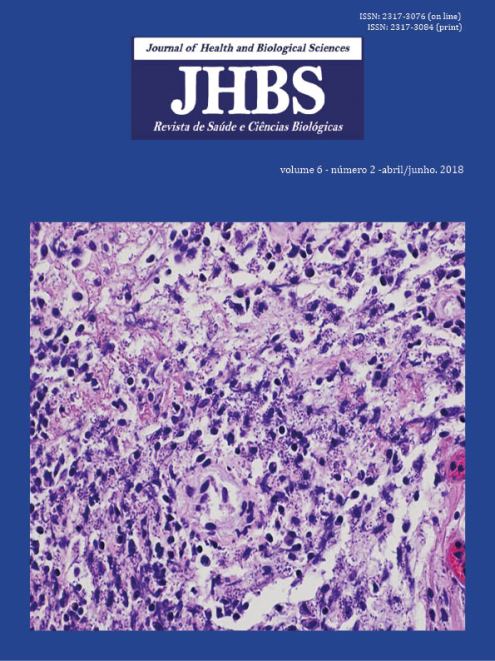Síndrome de Cornélia de Lange e Doença de Graves: uma associação rara
DOI:
https://doi.org/10.12662/2317-3076jhbs.v6i2.1657.p206-210.2018Keywords:
Hipertireoidismo, Síndrome de Cornelia de Lange, Doença de GravesAbstract
Introdução: A síndrome de Cornelia de Lange (SCdL) corresponde a uma condição rara caracterizada por mutações nos genes responsáveis pelas proteínas estruturais e reguladoras do complexo da coesina, levando o paciente à distrofia facial e aos atrasos no crescimento e desenvolvimento. Seu diagnóstico é baseado nos achados clínicos e/ou a identificação da heterozigose patogênica variante em N1PBL, RAD21, ou SMC3 ou homozigose patogênica variante em HDAC8 ou SMC1A. Essa síndrome possui um amplo espectro de manifestações que incluem anormalidades neurológicas, endocrinológicas, musculoesqueléticas e cutâneas. A Doença de Graves, por sua vez, representa o expoente mais comum de hipertireodismo, possui origem autoimune e resulta de uma complexa interação entre fatores genéticos e ambientais. Relato de caso: Este artigo tem por objetivo relatar um caso de uma paciente de 22 anos com diagnóstico de SCdL, a qual abriu o quadro de hipertireoidismo por Doença de Graves, apresentando insônia, irritabilidade e agitação, com melhora após tratamento medicamentoso.
Downloads
Downloads
Published
How to Cite
Issue
Section
License
Copyright (c) 2018 Journal of Health & Biological Sciences

This work is licensed under a Creative Commons Attribution-NonCommercial 4.0 International License.




















